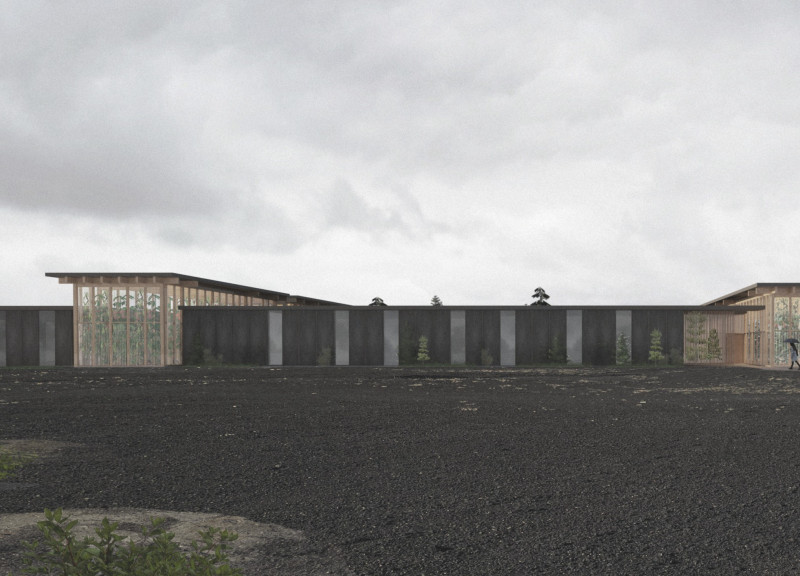5 key facts about this project
INTROSPECTION focuses on encouraging sustainable eating habits through its thoughtful design. Located in a setting that connects to nature, the building features greenhouses as key components. These structures create intentional pauses in everyday life, offering opportunities for awareness of local food practices and fostering mindful dining experiences.
Design Concept
The central idea of INTROSPECTION revolves around creating sensory experiences through architecture. The restaurant area eliminates sound, prompting visitors to engage with their meals on a deeper level and enhancing their appreciation for taste and sight. This approach helps create an environment that encourages reflection and mindfulness during dining.
Spatial Configuration
The architecture has a horizontal shape that aligns with the surrounding landscape, helping to establish a visual link with the environment. The roofs of the greenhouses are slightly raised, which contributes to the design's simplicity and clearly marks transitions between different spaces within the building. This arrangement enhances how people move through the interior, guiding visitors fluidly from one area to another.
Materiality and Structure
An exposed timber framework made of local spruce offers support for the elevated roofs. This choice connects the design to the local context and demonstrates a commitment to sustainability. The dark metal panels contrast with the transparent polycarbonate, allowing natural light to enter while maintaining a direct link between indoor and outdoor spaces.
Functional Areas
A central courtyard serves as a core part of the design, providing space for reflection and interaction among visitors. This area links various functions, encouraging a natural flow of movement throughout the building. The multipurpose hall is also designed to act as an educational space, highlighting sustainable growing practices and further integrating the project’s community engagement goals.
The greenhouses feature a continuous band of transparent polycarbonate around their edges, which allows daylight to fill the interiors. Visitors can look out and enjoy the views of the landscape, creating a connection between the inside experience and the outside world.






















































